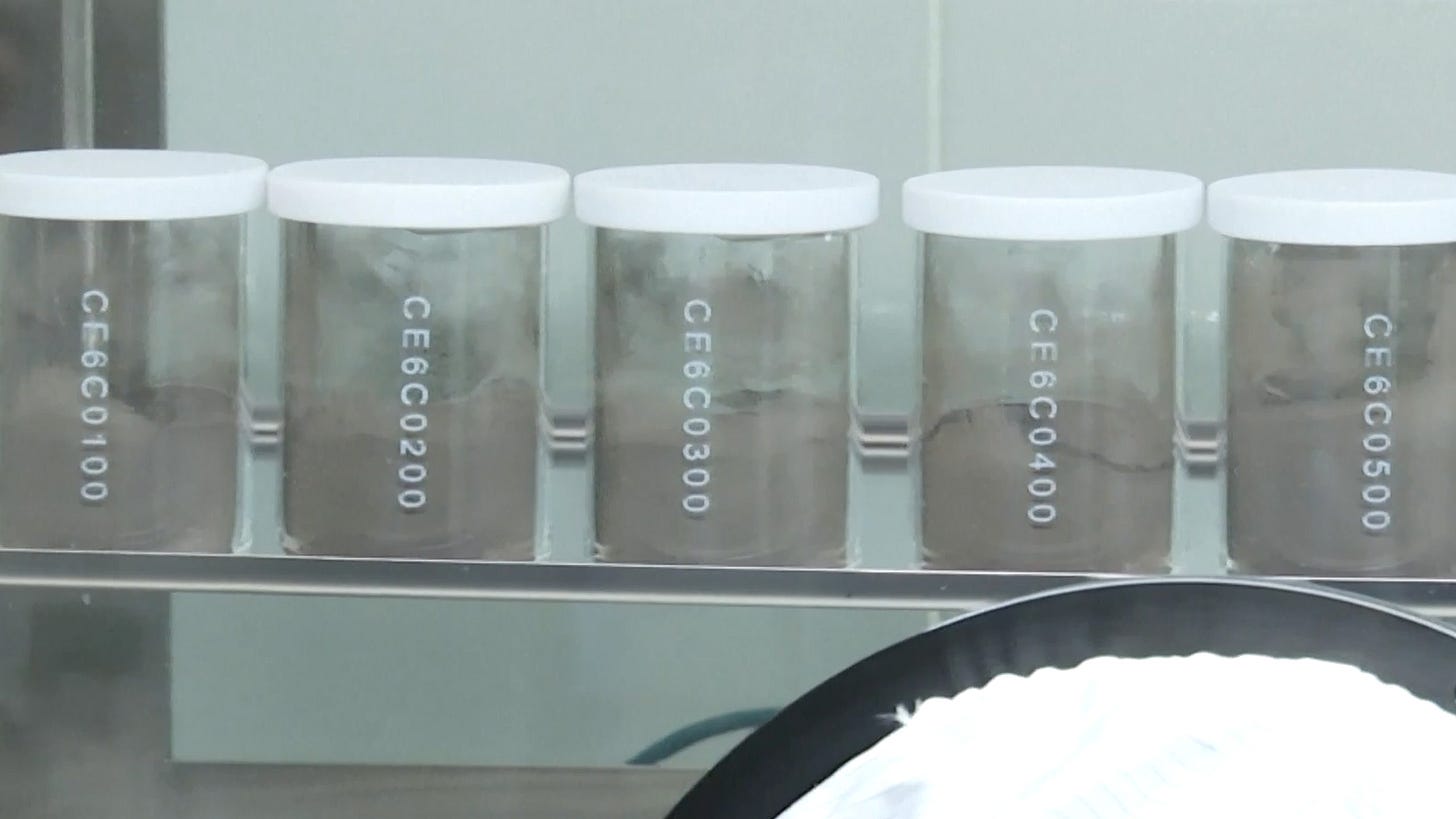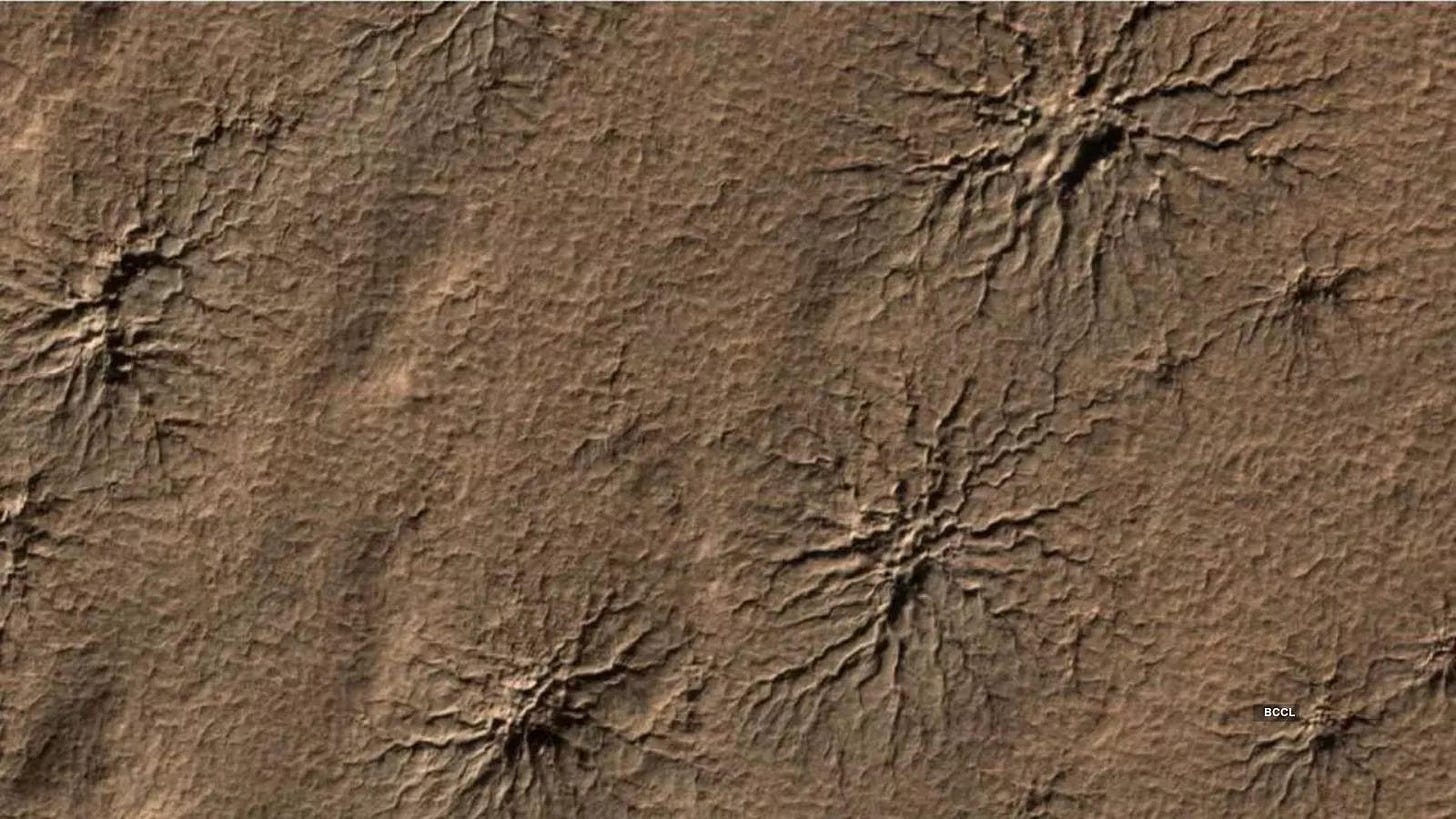Weekly - Scientists find explanation for strange spider-like structures on Mars and more
🟤 Weekly Space News - Quick and Easy.
This week’s post ranks brown 🟤 on the Engagement Palette.
Chang’e-6 lunar samples unveiled
Last week, the lunar samples brought back to Earth by China’s Chang’e-6 mission were finally opened 3 months after the craft returned to Earth. Then new samples are slightly lighter in colour due to their chemical composition and are also less dense than previous samples from other missions. This is because the soil in that region is more porous and loose.
Scientists find explanation for strange spider-like structures on Mars
In 2003 multiple Mars orbiters noticed some strange spider-like cracks on the surface of the red planet, spanning more than a kilometre long. Various attempts were made to explain this mysterious structure, but none were proven until recently. Researchers at NASA’s Jet Propulsion Laboratory attempted to recreate these structures on Earth using Mars soil simulants. This experiment proved that these cracks were caused by Carbon Dioxide ice under the Martian surface turning to gas (sublimating) due to Mars’s heat and creating cracks in the soil as they escape into the air.
China’s Yutu-2 becomes longest working rover on moon
China’s Yutu-2 rover was part of the Chang’e-4 mission that landed on the moon in 2019. Its original mission life was supposed to be 3 months, but 5 years and 9 months later, it is still working well. This makes it the longest time any rover has been working on the moon.





